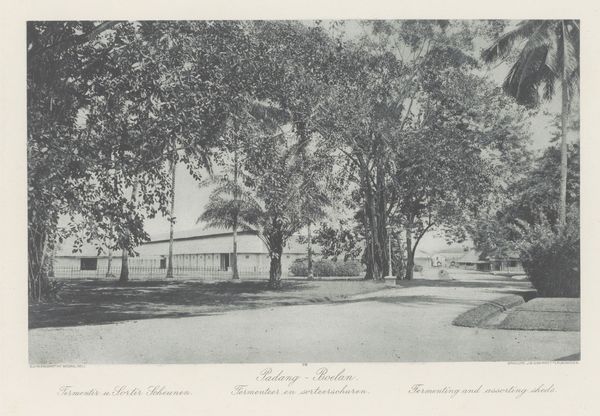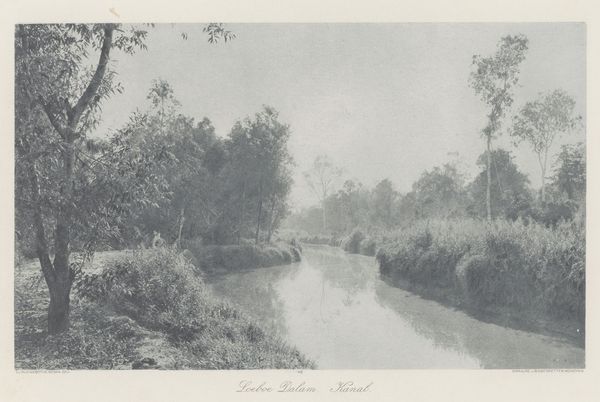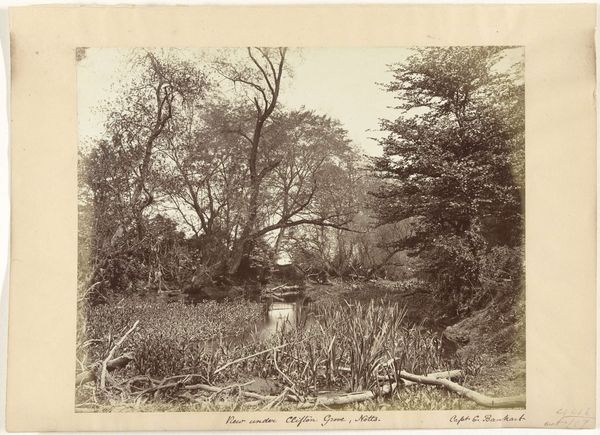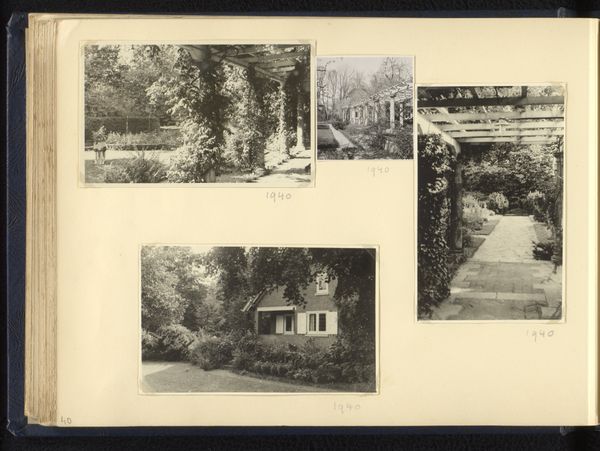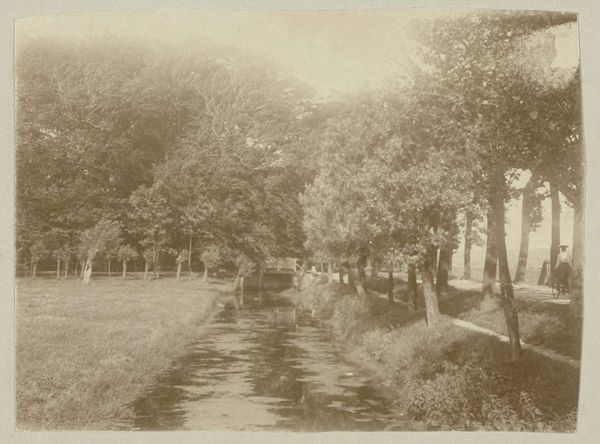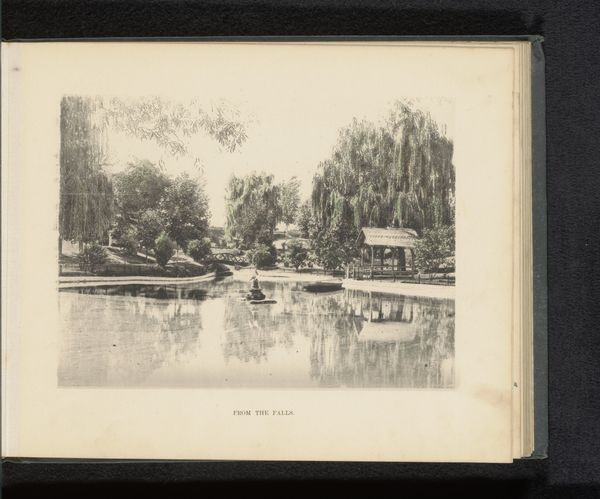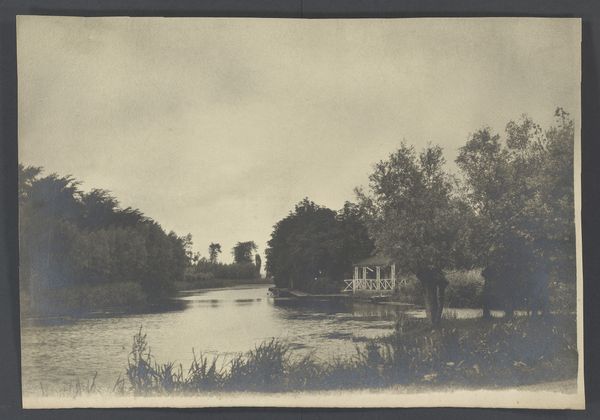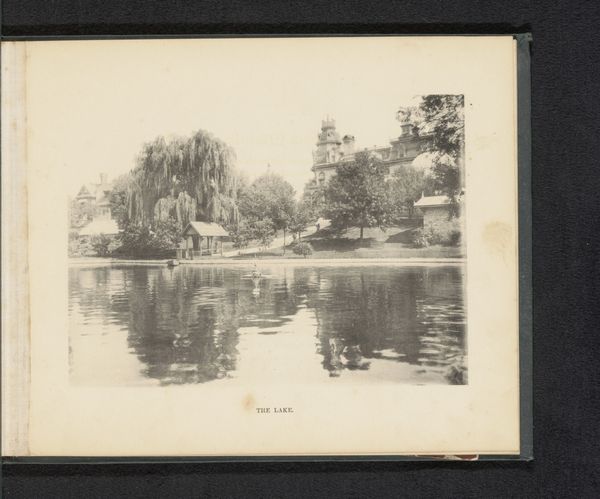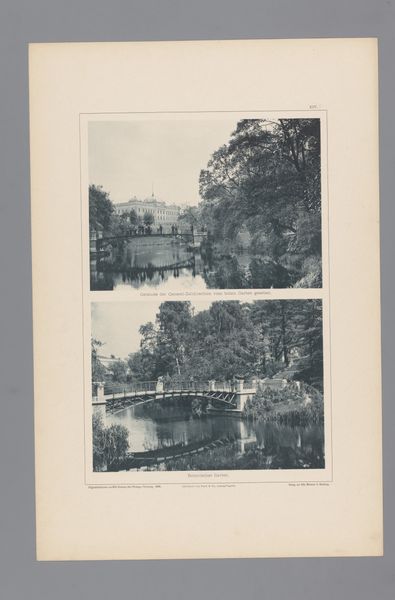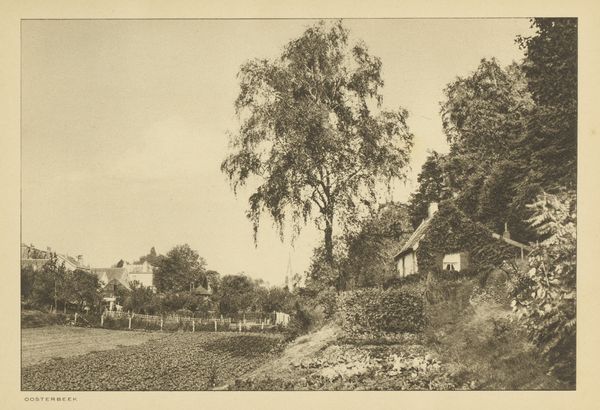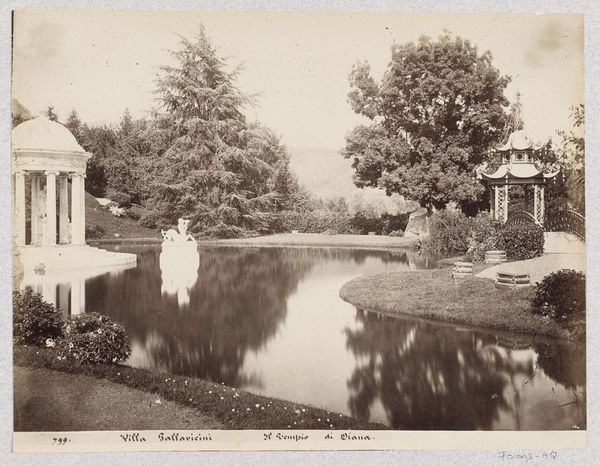
#
photo of handprinted image
#
natural shape and form
#
light pencil work
#
pale colours
#
organic shape
#
pencil sketch
#
light coloured
#
ink colored
#
remaining negative space
#
watercolor
Dimensions: height 173 mm, width 281 mm
Copyright: Rijks Museum: Open Domain
Editor: Here we have "Chinese Tempel in Kloempang op Sumatra," made before 1898, currently held in the Rijksmuseum. It's a muted, almost dreamlike image, with a temple glimpsed through dense foliage. What do you see in this piece, particularly within its historical context? Curator: I see a landscape deeply implicated in colonial power dynamics. Images like these, produced during the height of Dutch colonialism in Sumatra, romanticized the "exotic" East while simultaneously erasing the lived realities and power structures of the time. It asks us to consider who had the power to represent whom, and for what purposes? What does this picturesque scene conceal? Editor: That's a perspective I hadn't considered. The composition seems so peaceful; it's hard to immediately see that complexity. Curator: Exactly. This seeming peace serves as a veneer, obscuring the exploitation inherent in colonial projects. These images often functioned as propaganda, justifying the presence and actions of colonial powers by portraying colonized lands as idyllic and in need of "civilizing." Who do you think was this art made for, and what are its effects? Editor: Likely a European audience. Perhaps to fuel a sense of national pride or adventure? I hadn't thought about it as erasing lived realities, either, more like exoticizing people and places. Curator: The line is blurry, isn’t it? Exoticization inherently involves erasure, flattening diverse cultures into digestible, often inaccurate, stereotypes. Images such as this also furthered a Western gaze that positioned Europeans as the primary viewers and judges of value. What do we lose when only certain narratives are valorized and who bears the burden of its loss? Editor: That's given me a lot to consider about the relationship between art, power, and representation. Curator: Precisely! Hopefully we can learn to adopt critical strategies for examining these complicated power relationships when faced with such imagery, especially where they're missing from the overt narrative.
Comments
No comments
Be the first to comment and join the conversation on the ultimate creative platform.
